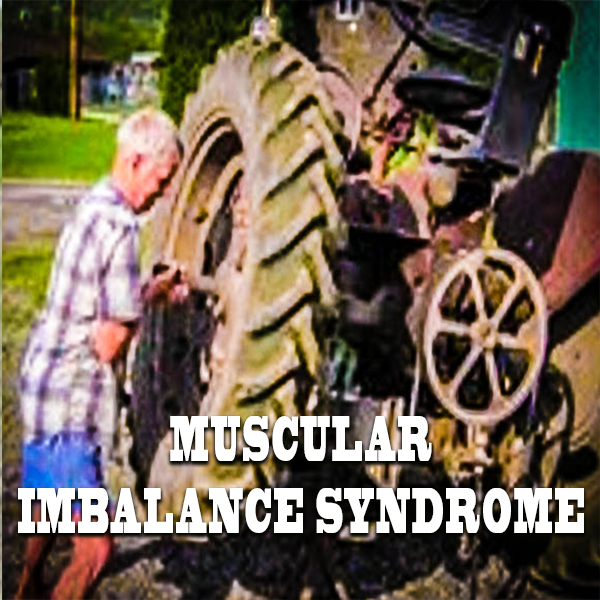Muscular Imbalance Syndrome

Muscular Imbalance Syndrome is responsible for most of our shoulder, knee and back pain. (1) Our training program needs to incorporate as many of our body’s muscles as possible. No one muscle works by itself. We have about 600 muscles that must work in coordination to make this magnificent machine do the work that we demand of it.
Stronger Muscles Damage Weaker Ones
Repetitive movement, like running, can build certain muscles while permitting others to be weaker. This can lead to pain and agony, and injuries in other areas. The origin of these problems is not always readily apparent—nor do they announce their presence where or when we expect them to—that is, at the damaged muscle, ligament or tendon.
Don’t Further Aggravate Injured Parts
As they say in football, when all else fails—back up and punt. Stop what you are doing and do something else. If you have been running, try swimming. If you have been doing weight lifting, try yoga. Quit what is causing the problem and come back after your body repairs itself.
If and when you return to the former activity, make changes that your body likes. Figure out which muscles need special attention. This may require outside help—after all you are the one who did the nasty deed.
The Body And Mind Train Together Fighting Muscular Imbalance Syndrome
Think of your body as a moving, flexible utility pole made of wet noodles. It runs, jumps, lift weights and even thinks for itself–without your help. This mass of muscle, blood, guts and bone can maintain itself and do wondrous tasks. The potential combinations of muscles that enable us to stay erect are extremely complex.
We cannot stand, set or move without our subconscious mind directing which muscles must contract and which must relax at a given time.
Differed Pain Seems To Travel
Your 600 muscles are constantly working to form your posture. Furthermore, they pull in every imaginable direction in order to move and maintain your complex body. Thereby, you permit your indulgence in the quest of life, liberty and pursuit of happiness.
No one muscle is isolated. Also, an imbalance of muscle strength, or tension, “tonus” will cause other muscles, tendons and ligaments to tighten and even tear itself. In extreme cases this can cause bones to break. Mental and physical problems ride in the same carriage.
“You can have an imbalance that starts in your shoulder and eventually leads to a pain in your heel.”(2)
Resources:
Ray Long M.D., orthopedic surgeon, sports medicine specialist, and author of the book The Key Muscles of Yoga. (2)
(1) Physiotherapist, Vladimir Janda, MD.
| Tags | Category | Author |
|---|---|---|
| jerry |